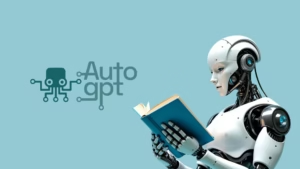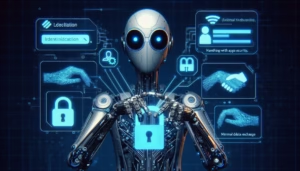The world is entering a new AI epoch—not just of intelligent assistants but of autonomous digital agents that can plan, reason, and act independently. This evolution is fueled by a powerful concept: Agentic AI, where artificial intelligence is granted “agency”—the ability to make and pursue goals with minimal human oversight.
From self-driving cars that navigate busy streets to AI agents that code entire applications or automate business workflows, Agentic AI is transforming industries. In this article, we’ll explore the technologies enabling this shift, real-world use cases, and the broader implications for businesses, developers, and society.
1. What Is Agentic AI?
Definition
Agentic AI refers to AI systems that operate as autonomous agents, capable of:
- Sensing and perceiving their environment
- Setting and pursuing goals
- Making decisions
- Acting with minimal human intervention
These agents don’t just follow instructions—they initiate actions, learn from feedback, and coordinate with humans or other agents.
Key Components
| Component | Function |
|---|---|
| Perception | Input via sensors, APIs, NLP, computer vision |
| Reasoning | Decision-making, logic, planning |
| Action | Taking real-world or digital actions |
| Learning | Adapting over time via reinforcement, feedback |
2. Technologies Enabling Agentic AI
2.1 Foundation Models & LLMs
LLMs like GPT-4, Claude, and Gemini enable language-based reasoning and dynamic decision-making. These models:
- Parse complex instructions
- Chain actions using tools or APIs
- Maintain long conversations or state (via memory)
Example: Tool Use with GPT-4
openai.ChatCompletion.create(
model="gpt-4",
messages=[{"role": "system", "content": "You are a travel agent."}],
tools=[
{"type": "function", "function": {"name": "search_flights", "parameters": {...}}}
]
)
2.2 Reinforcement Learning and Decision-Making
Reinforcement Learning (RL), especially model-based RL, gives agents the ability to optimize actions over time with feedback.
Example: AlphaCode by DeepMind
An RL-enhanced code generation agent that iteratively tests and improves programming solutions.
2.3 Tool Use and Embodied Actions
Modern frameworks let agents use APIs or robotics:
- LangChain / AutoGen: for tool-using text agents
- ROS: for embodied robotic agents
- ReAct / AutoGPT: plan + act + reflect loop

2.4 Memory and Long-Term Context
Agentic AI needs persistent episodic and semantic memory:
- Vector stores: Pinecone, Weaviate
- Memory graphs: for relationship reasoning
- Enables agents to remember past actions, users, and contexts.
3. Real-World Applications
3.1 Autonomous Vehicles
- Tesla, Waymo, and Cruise use sensor fusion + real-time neural networks to drive with limited human input.
- Agents assess surroundings, predict behaviors, and plan trajectories.
3.2 Robotic Process Automation 2.0
- Traditional RPA: rigid scripts
- Agentic RPA: dynamic, learning agents
- Example: An agent that reads invoices, queries a database, and emails the finance team autonomously.
3.3 DevOps AI Agents
- Cognition’s Devin: an AI software engineer that reads tickets, writes code, debugs, and deploys.
- Full-stack autonomy in software development pipelines.
3.4 Healthcare Agents
- Agents for triage, diagnostics, and treatment planning.
- Example: Babylon Health’s AI triage system, or Mayo Clinic’s use of AI scheduling agents.
3.5 Enterprise Agents
- Virtual employees for HR, sales, and support.
- Examples: Salesforce Einstein Copilot, Microsoft 365 Copilot automating full workflows.
4. Impact on Business and Society
4.1 Efficiency and Growth
- 24/7 operation without burnout.
- Lower operational costs, especially for startups and SMEs.
4.2 Job Evolution and Displacement
- Rise of “AI supervisors” and “prompt engineers.”
- Need for reskilling across sectors.
4.3 Ethical, Legal, and Governance Challenges
- Who is accountable for an agent’s decisions?
- Bias, hallucinations, rogue behavior.
- Laws and guidelines are still catching up (e.g., EU AI Act).
5. The Future of Agentic AI
5.1 Multi-Agent Collaboration
- Swarm intelligence: agents working in concert.
- Example: ChatDev—agents simulate an entire software dev company.
5.2 Human-Agent Co-Working
- Agents as collaborators vs. tools.
- Interfaces must ensure explainability, trust, and control.
5.3 Long-Term Potential
- Agents managing smart cities, education, and even governance.
- Speculation: Could we entrust AI with public policy or disaster response?
Agentic AI is not just an extension of existing AI capabilities—it’s a paradigm shift. These digital agents can transform industries, reshape work, and unlock massive efficiencies—but only if guided by responsible design and governance.
As developers, businesses, and policymakers, we must shape this future together—ensuring that autonomy in machines complements, rather than replaces, human agency.





